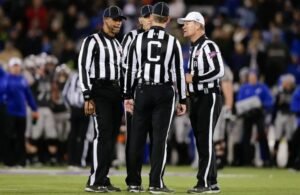Feathers and Foul Play: The Hidden Agenda Behind the South Carolina Gamecocks”

In the heart of the Palmetto State, a curious conspiracy brews—one that has college football fans raising their eyebrows and clutching their foam fingers. South Carolina’s beloved mascot, the Gamecock, might be more than just a symbol of school pride. Beneath the feathers lies a plot cloaked in loyalty, rivalry, and some good old-fashioned SEC scheming. Could it be that the South Carolina Gamecocks are out to get you? Let’s unravel this fowl mystery.
At first glance, the University of South Carolina’s Gamecocks seem like any other passionate college football team—devoted fans, raucous tailgates, and diehard traditions. But dig deeper, and the signs of a well-organized conspiracy begin to surface. From inexplicably timed upsets to uncanny officiating calls that somehow always seem to benefit the Gamecocks at just the right moment, skeptics argue there’s more to their success than grit and grind.
Consider their home-field advantage at Williams-Brice Stadium. Some visiting fans describe the stadium as a psychological trap—complete with blaring “Sandstorm,” cocky fans waving rally towels like cult members mid-ritual, and a mascot that stares into your soul. Could it be part of a larger psychological operation to unnerve opposing teams before the first snap?
Then there’s the recruiting drama. Several high-profile prospects have made last-minute switches to South Carolina, leaving rival fan bases dumbfounded. Coincidence? Or is there a covert network of boosters, alumni, and shadowy insiders influencing decisions behind the scenes? Some theorists claim that the Gamecocks are masters of the long game—playing chess while the rest of the SEC is still tossing cornhole.
The media, too, may be in on it. Positive coverage of South Carolina athletics seems to surge mysteriously during critical parts of the season. Analysts suddenly soften criticism, and highlight reels magically favor the garnet and black. It’s almost as if there’s an invisible PR machine working overtime to polish the Gamecock image while blinding viewers to questionable plays and tactics.
Even their mascot’s name change saga—shifting from “Sir Big Spur” to “The General”—seemed less about branding and more about misdirection. Was this a smokescreen to distract from internal shakeups or recruiting violations? Some believe the mascot swap was more than a quirky PR move—it was an intelligence operation in disguise.
Of course, all of this could simply be the result of passionate fans seeing patterns in the chaos of college football. But where there’s smoke, there’s often a deep-fried turkey leg. Whether you’re a believer or a skeptic, one thing’s clear: when the Gamecocks are on your schedule, watch your back. This team doesn’t just play to win—they play to conquer.
So next time you hear the crow of a rooster, ask yourself: is it just a bird—or the start of another feathered plot?
